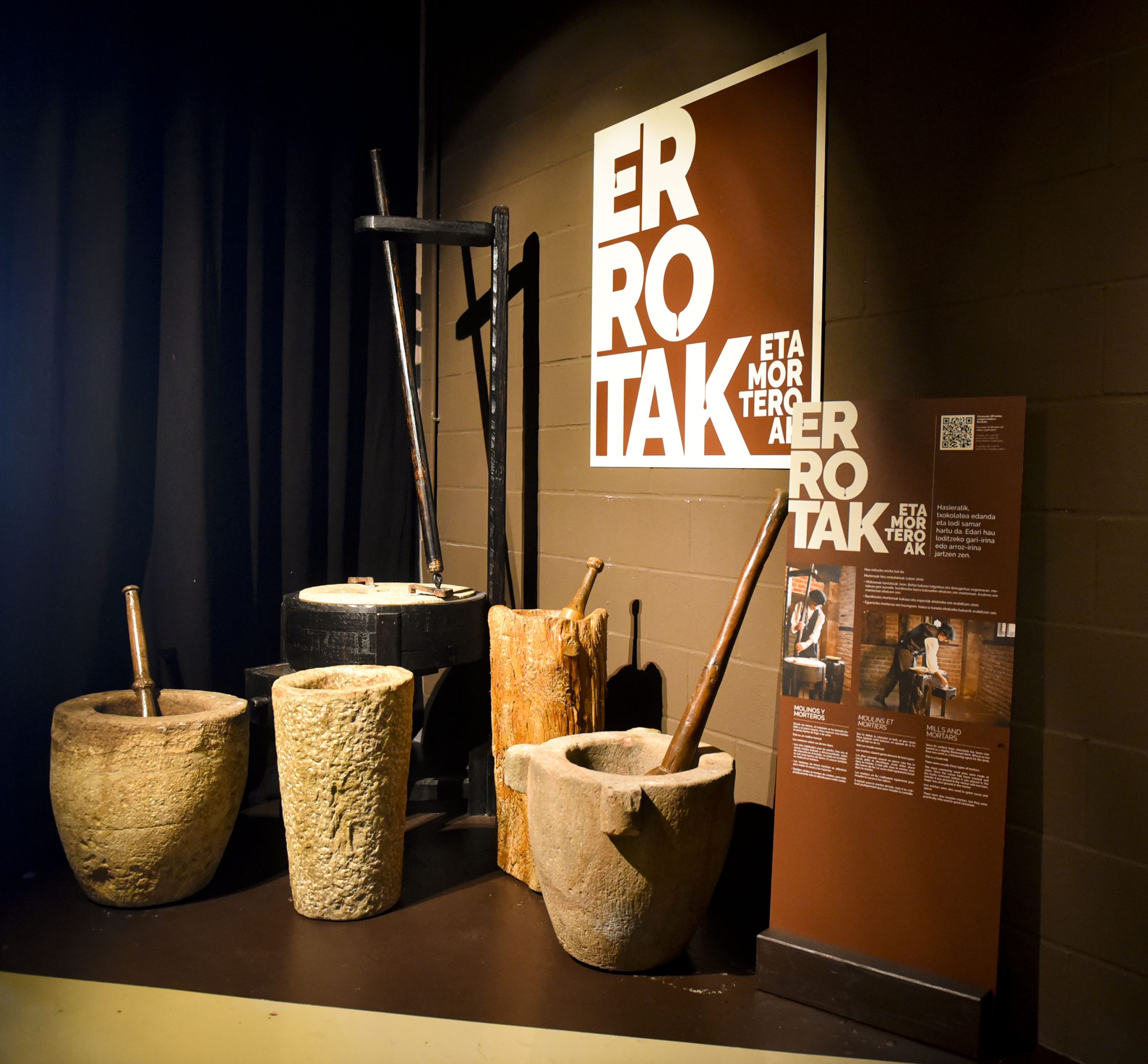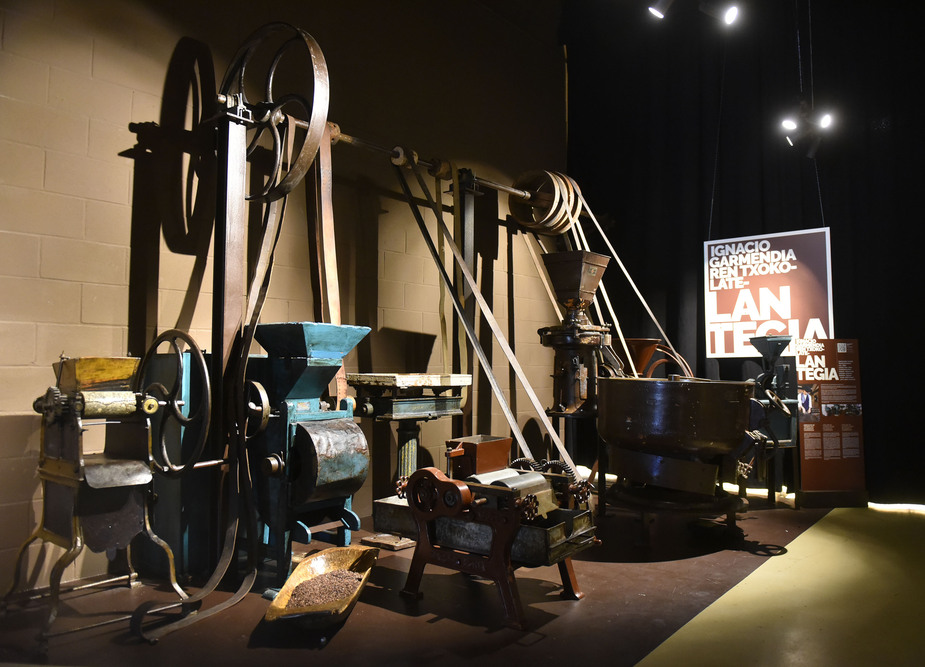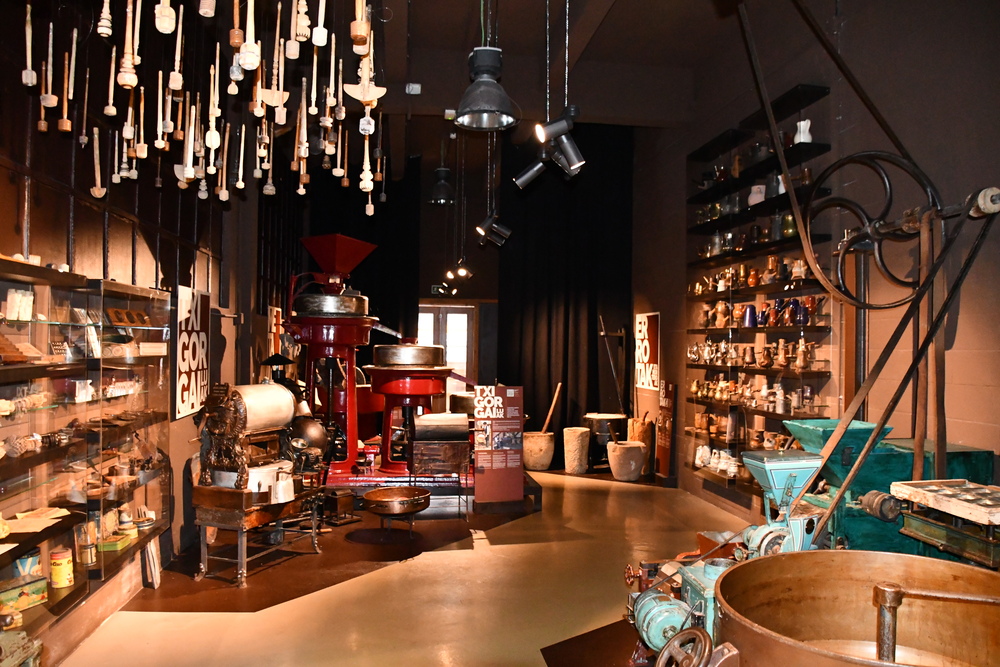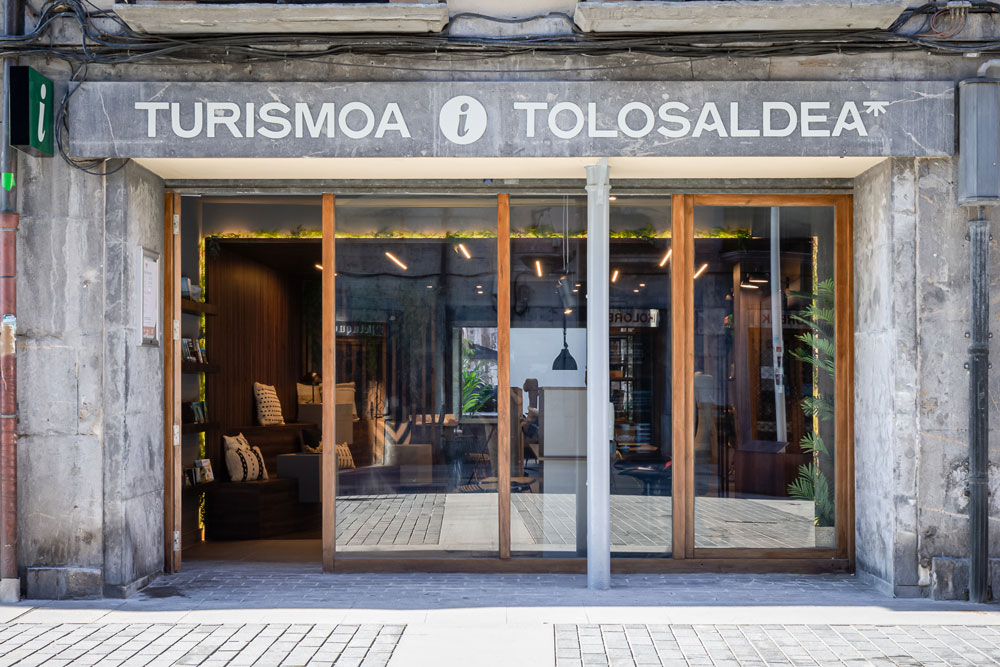Chocolate Museum, the sweet history of Basque gastronomy
Thehistoryofatrade,thatoftheconfectioner.
Amuseumthattellsthestoryofthefamilytraditionlinkedtosweets
In his chocolate museum, Rafa Gorrotxategi shows us a wide collection of chocolate pots from America and Europe, wooden grinders, porcelain teacups and mostacheras.
Mortars, large mills and grinders, toasters, baking and refining machines, moulds, scales and other utensils from private collections or that Rafa Gorrotxategi has acquired over the last thirty years.
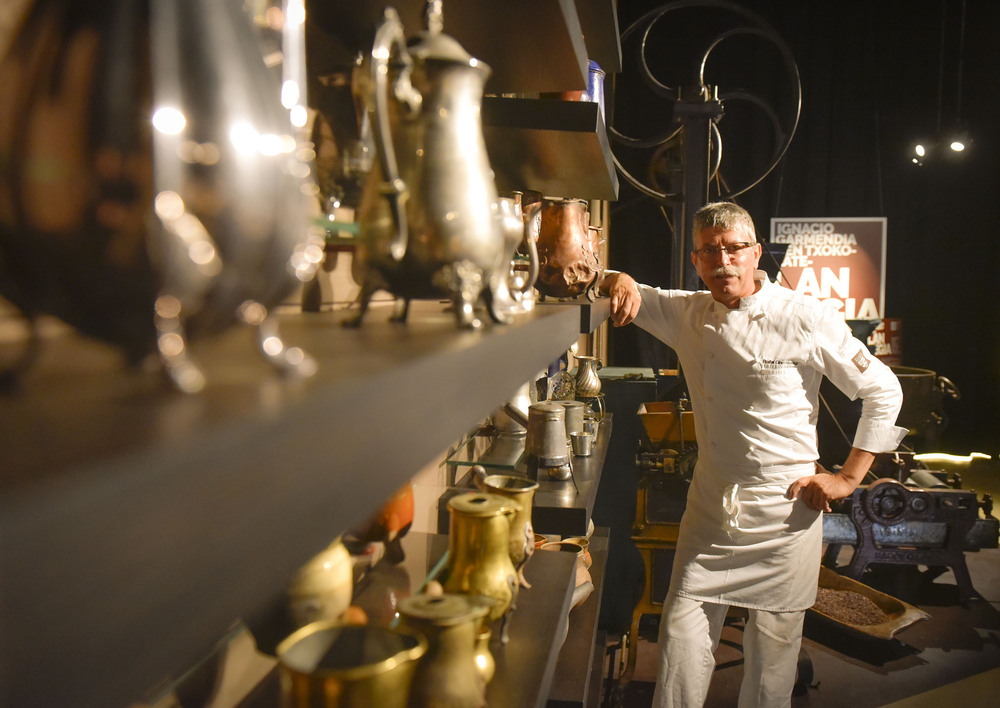
Rafa Gorrotxategi
Rafa Gorrotxategi is the third generation of the Gorrotxategi family. He worked with his father José Mari Gorrotxategi and trained in prestigious confectioneries, including three of the best in the world in Pastry and Chocolate: Antonio Escribá (El Mago del Chocolate) in Barcelona, Robert Linxe de la Maison du Chocolat in Paris and Paco Torreblanca’s Pastelería Totel in Elda (Alicante).
The Museum
This fabulous museum offers a journey through the historical evolution of chocolate making. A history that goes back more than five centuries. During the visit you can discover metates and all kinds of primitive tools, some of them pre-Columbian.
A special highlight is the reconditioned workshop of Juan Ignacio Garmendia, one of the first electric workshops in the Basque Country. The visit ends with a viewing of the documentary ‘Txokolatea’ in a space attached to the museum where workshops, tastings and chocolate tasting sessions are held.
Waxarea
Before the arrival of cocoa in our land, the trade that later became the confectioner-chocolatier was that of wax-maker, and the work consisted of making candles with the wax from the beehives.
There were beehives in every farmhouse and the bee was a highly respected and much-loved animal. When a member of the family died, the head of the family went to the beehives to report the death and the bees were asked to work hard to make many candles because the deceased needed light for the new path. A candle had to be lit for 2 years day and night.
Metatarszone
Its name comes from the Nahuath “metlatl”, which means “grinding stone”. It is a piece of stone, often of volcanic origin, which consists of two parts: one is rectangular in shape with three or four legs (although there are also some without legs) and the other is cylindrical in shape, like a roller, “metla pilli” (the hand).
It was used to grind foodstuffs, cocoa, cereals, corn, seeds, etc. and even to grind and prepare clay.
Millandmortararea
Since its beginnings, chocolate has been taken as drink and drunk thick. To thicken this drink, wheat or rice flour was used. This is a manual mill.
Roastingarea
To make chocolate, cocoa has always been roasted. This is one of the most important processes for the development of a good aroma and bouquet. In Mexico and other American countries, the cocoa beans were roasted on clay trays, known as “comal”; on the lower part there was a wood ember for heating.
In this system, as in the ones you will see below, it is necessary to move the cocoa continuously so that it does not burn.
IgnazioGarmendia'schocolateworkshoparea
The Garmendia family came from Abaltzisketa. They started working with chocolate in 1880, with a handmade and manual system. In 1920 they started to use electricity. It was a modern and well-prepared workshop for that time.
The production began with a modern roaster, brought from Barcelona, in which the cocoa was roasted in the same piece and, by means of an internal system, fell to the lower part where it was stirred and cooled with air. The cocoa was then passed to the electric dehulling machine, which proceeded to cut and separate the skin. Once the cocoa nibs had been cleaned of the skin, they were passed to the mill, also electric, which ground the cocoa and this, once liquefied, went into the mixer. In the electric mixer, which was heated with heating elements, all the ingredients were mixed: cocoa, sugar, flour and cinnamon.






